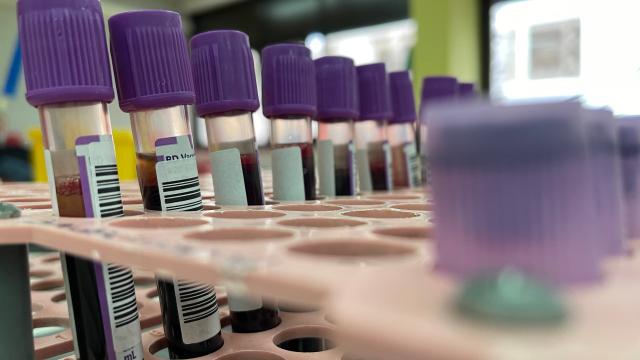Smallpox is the only disease we’ve ever managed to fully eradicate in humans; it hasn’t existed anywhere in the world since 1980. But its close relative, monkeypox, is still around. Monkeypox isn’t anywhere near as dangerous as smallpox, but a few recent outbreaks have public health officials worried.
In recent weeks, there have been suspected cases popping up in Europe, and the United States and now the first case has landed in Queensland, Australia.
Monkeypox is usually rare outside of tropical rainforest areas of Africa. But the patterns of recent cases suggest that the virus is more transmissible than in past outbreaks. For example, the U.K. cases include two clusters of people who were not in contact with each other, and only one involves a person who had recently travelled to an area with endemic monkeypox.
As the ABC has reported, Queensland Health is performing contact tracing and the infected person is currently self-isolating. New South Wales health authorities have warned people to keep an eye out for symptoms (which we go into a little later).
How bad is monkeypox?
Now, while it’s worth noting that monkeypox cases are usually mild and people are likely to recover in a few weeks, it is still worth understanding the risks of the illness.
Monkeypox isn’t as deadly as smallpox, but it can still be dangerous. Fatality rates range from 3% to 6%, according to the World Health Organisation.
Per the WHO, children do have a higher risk when being infected by monkeypox while people older than 40 or so are less likely to get it because they were alive during the smallpox eradication campaign. Smallpox vaccination was common decades ago; if you’re young enough that you don’t have a smallpox vaccine scar on your arm, your parent or grandparent probably does.
What are the symptoms of monkeypox?
With an incubation period of 5 to 21 days, you won’t know if you’ve been infected right away. Once symptoms start, there is an “invasion phase,” lasting about the first five days, where you may have a fever, muscle aches, fatigue, intense headaches, and swollen lymph nodes. The swollen lymph nodes are one of the big differences between monkeypox and other infections such as chickenpox.
Next comes the rash: You’ll get little lesions that start flat and then become raised, with liquid and then pus inside. These appear most often on the face (in 95% of cases) and the palms of the hands and soles of the feet (in 75% of cases). Other, similar diseases don’t usually have lesions on the palms of the hands; that’s a monkeypox special.
In total, the illness lasts two to four weeks.
Is there a treatment or vaccine?
There is no specific treatment or drug for a person who has monkeypox. Treatment is “supportive care” that may include things like keeping skin lesions clean, making sure your airways are clear, and administering medications to handle fever and secondary infections.
Here’s the good news: we do have a vaccine. The smallpox vaccine, which is still available, seems to be effective against monkeypox. The WHO has stated newer vaccines have been developed and one has been approved for use in the prevention of monkeypox.
How is the illness transmitted?
First, a fun fact: It’s not usually from monkeys. Monkeypox got its name from an outbreak that occurred in monkeys, but scientists aren’t sure which animal or animals most commonly carry the virus. Rodents are probably involved, and primates like monkeys and humans are also susceptible.
The virus is transmitted, according to the WHO, by “contact with lesions, body fluids, respiratory droplets, and contaminated materials such as bedding.” There is some suspicion that one of the clusters of cases in the U.K. may have come from sexual transmission.
Usually, the virus doesn’t transmit very well from person to person; the WHO reports that the longest identified transmission chain involved six people. But if the latest outbreaks are more transmissible than before, that could change. Masks may help, since respiratory droplets are one of the means of transmission (and unlike COVID, monkeypox is thought to be spread by only large droplets, and not aerosols).
This article has been updated with additional information since its original publish date.

Leave a Reply
You must be logged in to post a comment.